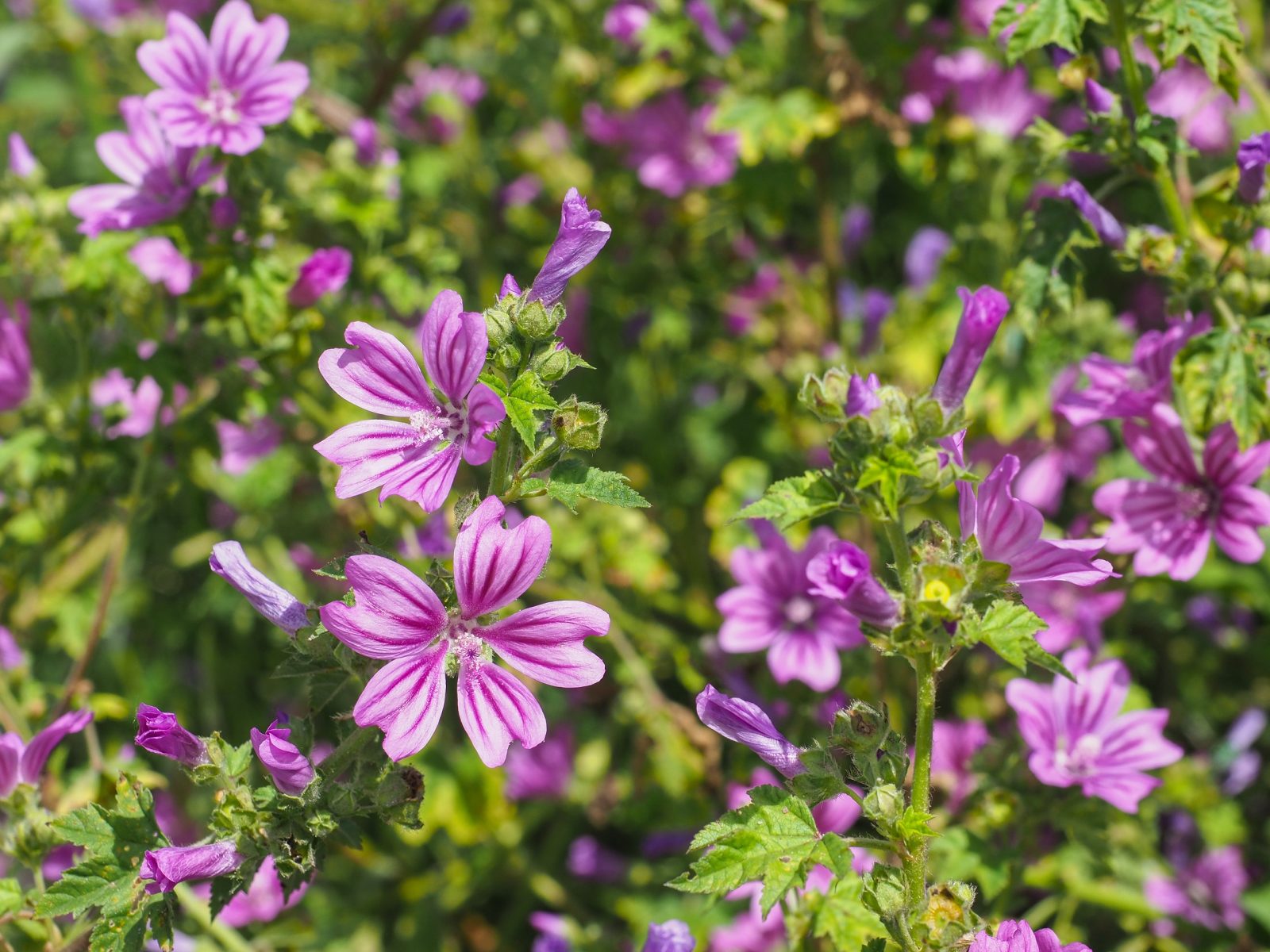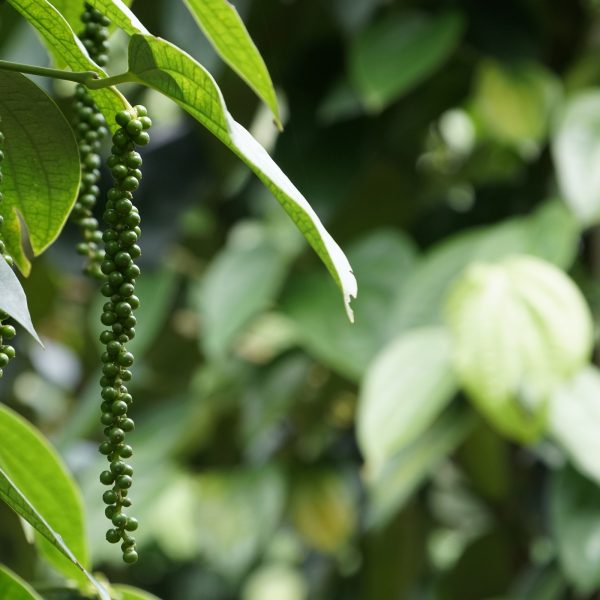Foraging is a fascinating skill that both deepens our relationship to nature and empowers our health. This article shares some interesting plants you can forage here in the UK in February.
Foraging is a wonderful way to connect both with nature, and nourish our health. We also want to spread the word about safe and ethical foraging, so please also read our article “A guide to safe and sustainable foraging” to learn how to practise foraging sustainably.
A useful link with images that can help with identification as well as botanical information is Wild Flower Finder.
Here Robin Harford shares some edible plants you can safely harvest from the wild in February.
Please note: Under Section 13 of the Wildlife and Countryside Act 1981, uprooting any wild plant without landowners’ permission is illegal (1).
Garlic mustard (Alliaria petiolata)

The release of a garlic smell and taste when the leaves are crushed led to the use of Garlic Mustard as an alternative to true garlic. It also made an excellent savoury salad green and potherb (2).
However, it might well have been an acquired taste. A 19th-century author, noted by Hatfield, wrote: “It has been used as a salad herb, boiled as a table vegetable, and made into sauce in the same manner as mint; but it is only tolerable in the absence of all other vegetables” (3).
One of its common names was ‘sauce-alone’; the ‘alone’ derived from ‘ail’, meaning ‘garlic’.
On the other hand, English herbalist John Gerard in the 16th century wrote it was good with salt fish (4), and Scottish botanist John Loudon in the 18th century recommended it as an accompaniment to boiled mutton (as a boiled green), in a salad or as a sauce (5).
Ground elder (Aegopodium podagraria)

Ground Elder has a long tradition of being eaten as a potherb in Europe in the Middle Ages.
That legacy survived in Sweden and Switzerland where it was collected for spring salads or cooked as a wild leafy vegetable (6).
Swedish botanist Carl Linnaeus (1707–1778) particularly recommended its young, tender leaves (7).
In Anglo-Saxon Britain, the plant was used to clarify beers and may have been called ‘gill’ from the French guiller, meaning ‘to ferment beer’.
In the markets of Medieval Cracow, Poland, Ground elder was once sold as a wild vegetable, but it is no longer eaten in the country despite being widespread (8).
In some parts of Ukraine, ground elder is still used as an ingredient of green borsh, a soup made of green vegetables (9).
In northwest Germany, it is collected in Spring to make a green soup, or grüne Suppe.
Sea beet (Beta vulgaris subsp. maritima)

Sea Beet has been used as a raw vegetable or potherb since prehistory.
Evidence of its use in ancient communities is widespread from remains of seeds, stalks and roots dated from the late Mesolithic era in Denmark and The Netherlands, to Neolithic sites in Holland and Poland (10).
Remains of the plant have also been collected from archaeological sites in Egypt dated between 3100–2400 BC (10).
Hunter-gather tribes may have cooked the roots, after the discovery of fire, and included sea beet as an important part of their vegetable diet (10).
In ancient Persia, gardeners admired the sturdy roots of Sea Beet that clung to sandy shores. They grew it for the large, green leaves that served well as a vegetable.
The leaves were said by Pliny (c75 AD) to work well with beans, lentils and mustard (10).
Cleavers (Galium aparine)

Cleavers aren’t an official food source today, but traditionally, like many common weeds, it made an excellent potherb.
It was a useful green for Medieval kitchens because the hardy plant could sometimes be picked in frost or snow, despite its aforementioned seasonal nature (11).
In today’s herbal kitchen, young tender shoots can be boiled and buttered as a vegetable or left to cool and added to salad.
The leaves and stems can be made into soups and stews (12).
Beginner foragers should take note, however, for the prickly hairs make the uncooked plant difficult to eat, thus it’s best eaten cooked.
Gabrielle Hatfield introduces cleavers as goosegrass – a wholly nutritious plant largely for culinary use, also “fed to poultry to fatten them”(3).
What made geese fat, made humans lean it seems. Cleavers has long been recommended as a slimming aid.
Gerard wrote in the 16th century: “Women do usually make pottage of Clevers with a little mutton and Otemeale, to cause lanknesse, and keep them from fatnesse”(5).
Common mallow (Malva sylvestris)
Common mallow is a popular wild edible plant among foragers. It has a long history of use in human culture, dating back to 3,000 BC. Archaeological finds in Syria have found M. sylvestris seeds in the fossilised remains of human teeth (13).

Like most mallows, common mallow yields disks of nutlets which are crisp and have a gelatinous texture.
Gerard described these edible disks as “knap or round button, like unto a flat cake”; children, shepherds and hunters once snacked upon these ‘cheeses’(14).
The leaves can be cooked and eaten like spinach, added to soups to provide texture or deep-fried like green wafers (15).
In Algeria, leafy vegetables such as common mallow are very popular. The plant is valued for its culinary and medicinal properties in Algeria, Morroco and Tunisia (16).
In western Iran, the branches and leaves, and other aerial parts of the plant, are prepared as a vegetable (17).
Common mallow is widely eaten in many Mediterranean countries including Portugal, Spain, Italy, Cyprus, Greece, Slovenia and Croatia.
The tender leaves and stems can be gathered in Spring and boiled with meat stews, added to soups or included in rice dishes.
Some traditional recipes for mallow leaves include the Lebanese khubbayzeh and labneh (strained yoghurt), the Cypriot soup called molochosoupa or the Moroccan beqoula (18).
References
- Wildlife and Countryside Act 1981. Accessed September 14, 2022. https://www.legislation.gov.uk/ukpga/1981/69/section/13
- Mac Coitir N, Langrishe G. Ireland’s Wild Plants: Myths, Legends and Folklore.; 2015.
- Hatfield G. Hatfield’s Herbal: The Secret History of British Plants. Penguin; 2008.
- Gerard J. Gerard’s Herbal: The History of Plants. Nachdruck. (Woodward M, ed.). Senate, an imprint of Studio Editions Ltd; 1994.
- Grigson G. The Englishman’s Flora. Helicon; 1996.
- Wyse Jackson P. Ireland’s Generous Nature: The Past and Present Uses of Wild Plants in Ireland. Missouri Botanical Garden Press; 2013.
- Grieve M. A Modern Herbal: The Medicinal, Culinary, Cosmetic and Economic Properties, Cultivation and Folklore of Herbs, Grasses, Fungi, Shrubs & Trees, with All Their Modern Scientific Uses. Tiger Books; 1998.
- Watts D. Dictionary of Plant Lore. Elsevier; 2007.
- Łuczaj Ł. Changes in the Utilization of Wild Green Vegetables in Poland Since the 19th Century: A Comparison of Four Ethnobotanical Surveys. Journal of Ethnopharmacology. 2010;128(2):395-404. doi:10.1016/j.jep.2010.01.038
- Biancardi E, Panella LW, Lewellen RT. Beta Maritima: The Origin of Beets. Springer-Verlag; 2012. doi:10.1007/978-1-4614-0842-0
- Mabey R, Blamey M. Food for Free. Collins; 1974.
- Duke JA. CRC Handbook of Edible Weeds. CRC Press; 1992.
- Gasparetto JC, Martins CAF, Hayashi SS, Otuky MF, Pontarolo R. Ethnobotanical and Scientific Aspects of Malva sylvestris L. Journal of Pharmacy and Pharmacology. 2012;64(2):172-189. doi:10.1111/j.2042-7158.2011.01383.x
- Barros L, Carvalho AM, Ferreira ICFR. Leaves, Flowers, Immature Fruits and Leafy Flowered Stems of Malva sylvestris: A Comparative Study of the Nutraceutical Potential and Composition. Food and Chemical Toxicology. 2010;48(6):1466-1472. doi:10.1016/j.fct.2010.03.012
- Facciola S. Cornucopia II: A Source Book of Edible Plants. Kampong Publications; 1998.
- Mohammed CB, Chahid B, Fatima B, Fatima-Zohra S, Meriem B, Farid C. Antioxidant Activity, Phenolic and Flavonoid Content in Leaves, Flowers, Stems and Seeds of Mallow (Malva sylvestris L.) from North Western of Algeria. Afr J Biotechnol. 2014;13(3):486-491. doi:10.5897/AJB2013.12833
- Tabaraki R, Yosefi Z, Asadi Gharneh H. Chemical Composition and Antioxidant Properties of Malva sylvestris. 2019;8:59-68.
- Sánchez-Mata M de C, Tardío J, eds. Mediterranean Wild Edible Plants: Ethnobotany and Food Composition Tables. Springer; 2016. doi:10.1007/978-1-49393329-7





























